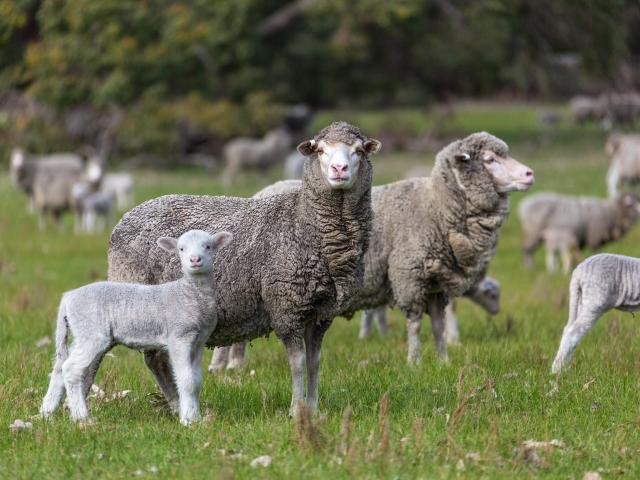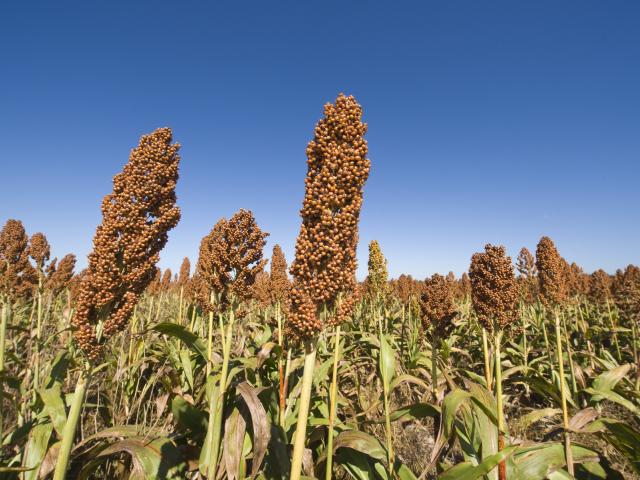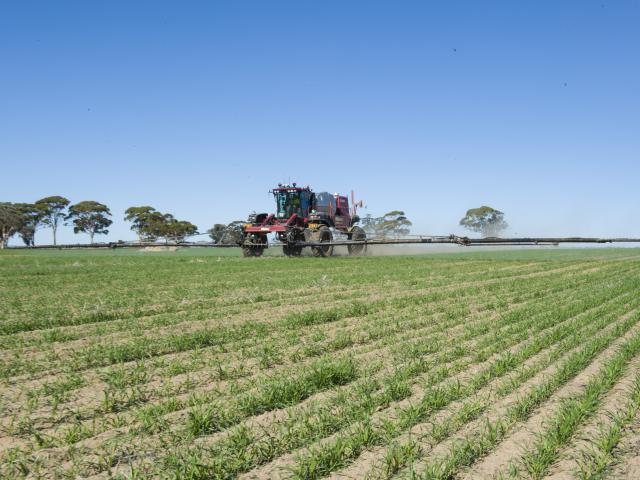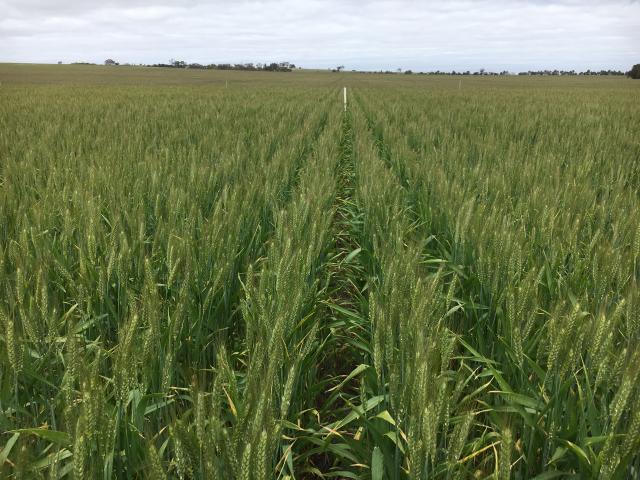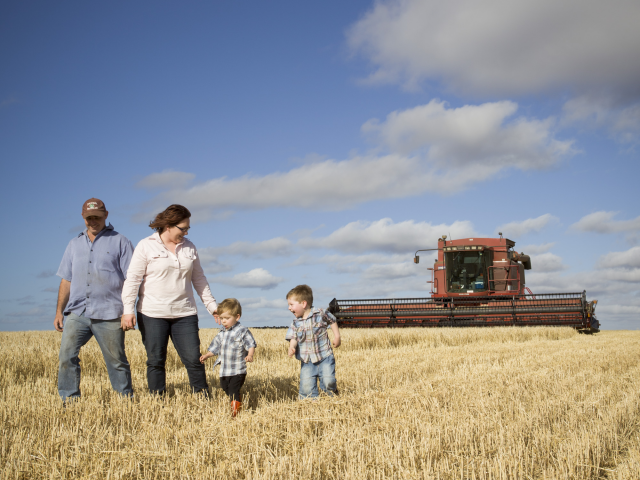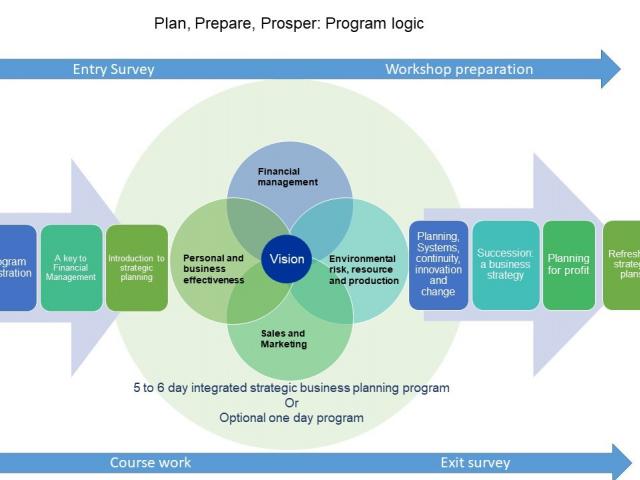Weaning to get the best out of your lambs
Sheep producers are reminded of the benefits of weaning lambs at 14 weeks after the start of lambing to optimise growth rates and pasture use.
Weaning at no later than 14 weeks ensures there are no impediments to achieving the highest growth rate before pastures start to flower. The ultimate goal is to capture as much live weight before pasture senescence to improve the weaned lamb’s survival over summer.
Weaning allows lambs to be given selenium and cobalt before the spring flush and preferentially graze clover-dominated pastures to ensure maximum growth rates.
Weaning by 14 weeks also helps to minimise the risk of worms in lambs, which could lead to reduced growth rates, scouring and fly strike.
Lambs have no immunity to worms, and weaning removes lambs from paddocks that may have been contaminated with worms by their mothers.
Ideally, lambs would be weaned onto a paddock with a lower worm burden to extend the benefit of being given an effective drench.
Recent research has demonstrated lamb growth rates above 240 grams per head per day in the first 14 weeks after the start of lambing results in lambs being more resilient to winter worms.
It is recommended lambs be weaned onto paddocks with access to good quality water (maximum of 900 millisiemens per metre) and feed on offer (FOO) levels of more than 1500 kilograms per hectare to maximise their intake of energy.
The calculated grazing pressure should ensure the lambs do not eat into this FOO bank.
This all adds up to a higher liveweight by pasture senescence.
Where 1500 kg/ha of FOO is not available, supplementary feeding should be undertaken.
If weaned lambs are to receive supplementary feeding, they should be trained to eat lupin or cereal grain or pellets, while still with their mothers.
This period of ‘imprinting’ is important to ensure weaners are conditioned to the feed and won’t have negative growth rates in the two weeks after weaning.
On weaning day, it is important that lambs receive a second vaccination for clostridial diseases and cheesy gland. Check the sheep weaning best practice guide.
Delaying weaning longer than 14 weeks after the start of lambing will ensure any reduced growth rates from winter worm burdens is unlikely to be regained as they are unable to compensate in the future due to reduced pasture quality once flowering starts.
For more information contact Danny Roberts, Veterinary Officer, Albany, +61 (0)8 9892 8535.
Weaning to get the best out of your ewes
Ewes benefit from weaning, as they have more time to regain condition before joining.
Ewes need sufficient time and adequate feed on offer (FOO) (more than 1000 kg/ha) to regain condition, as they need to reach condition score 3 by joining to achieve good reproductive rates.
Producers also have greater flock management flexibility after weaning, enabling ewes to graze paddocks with less the 1500 Kg/ha FOO, or graze paddocks that have silver or barley grass dominant pastures, or ewes can be agisted or sold.
Any ewes less than condition score 2.5 before pasture senescence should be separated off into a separate group and provided with more than 1500 kg/ha FOO to ensure they reach the target of condition score 3.
Pasture growth rate needs to be greater than the rate of pasture removal by grazing animals, otherwise FOO will decrease and further reduce growth rate.
See Grazing annual pastures in winter and spring for tactics on managing pasture to manipulate the quality and quantity as well as the composition; increasing animal production efficiency and achieving production targets; reducing insect populations; and ensuring pasture persistence.
For more information contact Danny Roberts, Veterinary Officer, Albany, +61 (0)8 9892 8535.
South coast summer crop options following a dry winter
There are a number of good reasons to produce summer-growing tropical and subtropical fodder sources on areas of fragile and exposed soils that have had little growth over winter.
A major aim in WA’s south coastal environment is to stabilise and protect fragile soils from wind erosion, with a secondary aim of grazing for livestock production.
However, a profitable grain yield in this environment is not likely.
The Department of Primary Industries and Regional Development is working with local agronomists to offer the following advice for those considering a summer fodder crop.
Strategies
Assuming the aim is to protect fragile soils, there are two key strategies to consider.
- Early sown planned approach: In this case, the soil should be kept free of weeds from early September onwards to help maintain soil moisture. This will hopefully allow for sufficient moisture to be available when soil temperatures reach at least 15 degrees by 8am for five consecutive days. The risk is that there is insufficient moisture stored and the crop cannot be successfully established and the already fragile soil is left bare for the entire summer.
- Purely opportunistic: If a significant amount of summer rain is received, wait for a germination of weeds and then seed as soon as possible. This is a much more predictable method of establishment but frequently does not occur until much later in the season but usually allows for successful grazing and good ground cover.
Species
The best grain species to use are generally Sorghum, Sudan Grass, Sudax and Millet. Some hybrid corns are emerging that will germinate under lower soil temperature conditions but these still need to be trialled under south coast summer dryland conditions.
Many people have gone down a high input road to produce these crops but, in reality, the yield and production levels are determined by often infrequent rainfall on very shallow soils with low moisture-holding capacity.
The application of significant amounts of fertiliser and the costs and risks associated with that are unlikely to yield profits in many south coastal environments.
Sorghum
Sorghum is in most cases the most productive product available, however, there are issues with it in the south coastal environment.
Water stress is very likely at some stage and, if it is to be grazed by livestock, the newer low prussic acid varieties (SSS) should be used.
However, be aware that these will still result in high and toxic levels of acid when under significant stress.
The old rule of thumb was that crops should not be grazed when shoots are less than 18 inches (or 45cm) tall.
In this environment, there will be a range of shoot development under some degree of stress.
If grazing, be very mindful of the crop condition and development.
It may be that the crop cannot be grazed at all if the summer is very dry.
Seeding rates are dependent upon the seed quality and germination.
The bag’s tag or panel at the bottom of the bag should state the number the seeds per kilogram so the seeding rate can be calculated.
Significant grain yields are unlikely and grazing is preferable but with uncertain establishment, seeding rates of 3-4kg/ha are usually best.
Wider row spacing may be used and many farmers lock back every second tyne in order to minimise soil disturbance while achieving the necessary planting density.
Millet
Millet is less productive than Sorghum but, in some cases, can be more resilient and useful under dry conditions.
Millet can germinate at slightly lower temperatures than Sorghum and hybrids.
The benefit with Millet and its hybrids is that it does not have any prussic acid issues and grazing can occur at almost any time as long as the plants cannot be pulled from the ground by grazing animals.
Seeding rates in the range of 3-4kg/ha are usually best in an uncertain seed environment.
Weed control
As with any cropping, weed control at emergence is essential for the development and success of the crop. Knockdowns are essential but in the case of these species, you are also able to use triazines and some other products as a pre-emergent to keep weeds out of the sward while the crop emerges.
Radish and melons can be a significant weed in these crops but can be controlled using spray grazing techniques with phenoxy herbicides as required.
For more information contact Graham Laslett, Senior Agronomist, Combined Agronomic Service on +61 428 910 083.
Residual effect of herbicides on next year’s crops
Dry sowing crops is quite common in Western Australia and its success relies on the longevity of soil-applied herbicides for weed control.
However, growers need to be aware that herbicides applied one season may still be active the following season and have a significant effect on next season’s crops.
The Department of Primary Industries and Regional Development advises that different soil-active herbicides have a different residual life in soil, with some remaining active longer than others.
Herbicides are broken down via solar, chemical and/or microbial degradation, with the organic matter content, moisture and temperature of the soil having a big role to play.
Under dry conditions in areas such as the Shire of Jerramungup, the breakdown of herbicides applied at the start of this current season may be very slow, resulting in significant residues in the soil.
Moreover, summer rainfall is not necessarily as effective as growing season rainfall in breaking down herbicides, as it needs to be substantial to keep the soil wet for a specified period of time.
So these possible herbicide residues could affect crop emergence, crop growth or even kill sensitive crops or crop varieties planted next season in rotation.
The herbicides of most concern from a residual point of view are sulfonylurea (e.g. chlorsulfuron), imidazolinone (e.g. imazapyr, imazethapyr), triazine (e.g. atrazine, simazine, terbuthylazine), or benzamides (e.g. isoxaben).
The soil pH will have an impact on which herbicides are more likely to persist.
All other things being equal, sulphonylureas will be more persistent on alkaline soils and imidazolinones on acid soils.
Triazines are very slightly more persistent on alkaline soils.
Diflufenican damage symptoms have also been reported following recent dry years on canola crops where products such as diflufenican (e.g., Brodal® options) were applied to lupin crops, or diflufenican/MCPA (e.g., Tigrex®) or diflufenican/bromoxynil (e.g., Jaguar®) were applied in wheat crops.
For more detailed information on herbicide residues, on-farm residue testing, cropping options for suspected herbicide residue paddocks, and decay of pre-emergent herbicides in dry soils, please visit the Residual herbicides – carryover and behaviour in dry conditions page on the DPIRD website.
For more information contact Harmohinder Dhammu, Research Officer, Northam, on +61 (0)8 9690 2217.
Crop rotation considerations for 2019
Producers are being urged to consider using an online tool which allows them to devise their 2019 crop sequence for each paddock.
The Department of Primary Industries and Regional Development’s (DPIRD) WA crop sequence calculator may prove beneficial in situations where canola hasn’t been sown due to dry conditions in 2018 and crop rotations need to be restructured in 2019.
The tool can be used to compare gross margins for different crop sequence options based on results from dynamic crop sequence trials at Katanning and Wongan Hills.
The crop sequence calculator allows producers to devise their 2019 crop sequence for each paddock, treating 2018 as a fallow year where the paddock was not cropped.
It was developed from experimental data at two sites over four years – 2008 to 2011 for Katanning and Wongan Hills and is set up to demonstrate yield performance and return rates yearly or cumulative of three and four years of rotation.
The experimental returns are based on the trial data but the ‘your returns’ section gives producers flexibility to manually change the values for yield, cost and price and obtain the returns accordingly.
To have confidence in the output producers can also use the historical data charts to compare crop sequences to wheat after wheat by simply changing the crop selected in year two.
For more information contact Raj Malik, Research Office, Katanning, on +61 (0)8 9821 3 247.
Plan, Prepare and Prosper suite of workshops
The Department of Primary Industries and Regional Development (DPIRD) is once again offering its suite of Plan, Prepare and Prosper workshops and encourages rural business owners to become involved.
The workshops are part of a free program designed to assist rural businesses involved in farming, fishing and food processing to plan for and manage through variability in the seasons, global markets and other challenges they may face.
The training and business planning undertaken in these workshops is intended to strengthen businesses, help find ways to increase profitability, manage risk and support family.
Participants can choose to attend the entire program to complete a strategic business plan for their business or attend only those workshops that meet a specific business need.
The program has worked with more than 2400 family businesses with many of them claiming to have improved their business returns on capital, reduced costs and been able to improve profit per hectare as a direct result of the training.
They are also reporting getting a better deal on their finance and from other service providers, and some are putting in place the tools and strategies that will help them reduce risk.
Plan, Prepare and Prosper workshops are part of the State Government’s ongoing commitment to the prosperity and sustainability of the rural business sector.
They are offered in locations close to farming communities and no more than 10 businesses take part in each workshop. Times can be adjusted to suit participants needs.
There are nine workshops in the Plan, Prepare and Prosper suite to choose from:
- The key to financial management
- Introduction to strategic planning
- Financial management
- Personal and business effectiveness
- Sales and marketing
- Environmental Risk Resource and Production
- Planning systems, continuity, innovation and change
- Succession: a business strategy
- Planning for profit
- Refreshing strategic plans.
To attend any of the Plan, Prepare and Prosper suite of workshops, register online by completing a Plan, Prepare and Prosper application form.
Go to Plan, Prepare and Prosper, register for the full five or six day program or register for some of the workshops.
Please be advised that scheduled dates are subject to change, and workshops require a minimum number of confirmed attendees to be delivered in the advertised locations.
For further information call 1800 198 231 or email the department.
Soil nutrition considerations following a dry season
Producers are reminded that when deciding on crop nutrition following a dry season, the main factor to consider is knowing the likely responsiveness to the major elements, which is best determined by soil tests.
The Department of Primary Industries and Regional Development (DPIRD) advises that when it comes to responsiveness, there is no general rule to determine whether the same or less fertilizer is required after a dry season.
While less nutrients have been removed with production, fertilizer applied this season may or may not be sufficient for the next and it is dependant on the status of the soil at the start of the season.
It is better to think of nutrition in terms of responsiveness, ranging from not responsive to very responsive.
Producers can reduce fertilizer input according to budget and still grow a profitable crop. The biggest return to money spent when there is a fertilizer response is the first amount applied.
The initial amount of fertilizer promotes seedling vigour so ensures the biggest return for dollars invested.
There is a bigger return to fertilizer dollars spread over two hectares than one but consider each nutrient separately.
Soil tests are the best indicator of whether a paddock is likely to be responsive to fertilizers.
Many soils will barely be responsive to Phosphorus (P) and will only require a minimum starter rate of 3 to 4 kg P/ha.
More information is available at What’s the minimum Phosphorus rate if you are following a poor crop?
On heavier soils Nitrogen (N) may be higher following a dry season but rainfall over the summer can have a bigger impact than any residual N.
Refer to Tips to tweak your crop nutrition program following drought for some useful information.
For more information contact Jeremy Lemon, Senior Development Officer, Albany, on +61 (0)8 9892 8413.
Staying connected in challenging times
The Department of Primary Industries and Regional Development (DPIRD) and the Regional Men’s Health Initiative are working together to remind the community of the importance of staying connected in challenging times.
In agriculture, the biggest stresses are things that cannot be controlled such as weather issues, followed by a multitude of other factors such as commodity prices, input costs and machinery breakdowns.
Challenging seasons affect the whole community including farmers, people involved in agribusiness and those in the agri-link industries.
No one can change the weather, but we can manage our programs and control our business as best we can which importantly includes looking after ourselves and each other.
Remaining connected is one way of doing this.
Rural communities have an innate capacity to reach out, and organise and participate in many activities.
This allows communities, as a collective, to start a conversation.
It also gives permission for blokes to recognise and talk about some of the individual pain and distress that is often suffered alone.
We describe primary care as ‘what can we do to look after ourselves and others’.
Invariably it is about connection and some simple things we can do to stay connected include:
- Talk to a mate and realise that we are not alone
- Talk to whoever needs to be informed about our situation (family, financiers, advisors)
- Keep an eye on others – drop into a neighbour and have a chat and a coffee. Take the time to ask someone ’are you okay?’
- Slow the pace of your life a little, join a group that fits in with your passions and interests. It will make a difference
- Maintain our sense of humour, laugh at ourselves and with others.
Staying connected is important and something we must actively work on.
The Regional Men’s Health Initiative
delivered by Wheatbelt Men’s Health (Inc.)
PO Box 768, Northam WA 6401
Phone: 08 9690 2277
Email: menshealth@4blokes.com.au
www.regionalmenshealth.com.au

